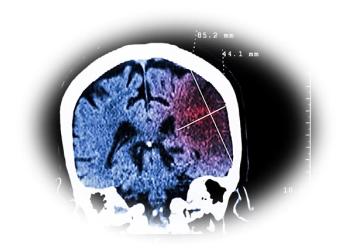
Consensus Guidelines Simplify ICD Recommendations
DALLAS -- Myocardial infarction survivors who have ventricular dysfunction as measured by an ejection fraction of less than 40% should receive implantable cardioverter defibrillators to prevent sudden cardiac death.
DALLAS, Aug. 22 -- Myocardial infarction survivors who have ventricular dysfunction as measured by an ejection fraction of less than 40% should receive implantable cardioverter defibrillators to prevent sudden cardiac death.
That's the uncomplicated and straightforward consensus of major U.S. and European heart groups that is spelled out in guidelines issued today called Management of Patients With Ventricular Arrhythmias and the Prevention of Sudden Cardiac Death.
This set of recommendations is the third in a series of guidelines from the American College of Cardiology, the American Heart Association, and the European Society of Cardiology that address management of cardiac rhythm disorders.
This one marks the groups' effort to end the ongoing debate over who should receive an ICD. It was issued in collaboration with the European Heart Rhythm Society and the Heart Rhythm Society.
That debate was triggered by the releases of the MUSTT (Multicenter Unsustained Tachycardia Trial) results in 1999. They reported that compared with best medical therapy, ICDs reduced the risk of sudden cardiac death in patients with coronary artery disease, unsustained ventricular tachycardia, and an ejection fraction of 40% or less.
It heated up when the MADIT-II (Multicenter Automatic Defibrillator Implantation) trial results were reported in March 2002. That trial found that ICDs reduced the risk of sudden cardiac death among patients who had an ejection fraction of 30% or less after myocardial infarction. Moreover, the benefit was apparent in patients with and without a history of ventricular arrhythmia.
And the debate reached a crescendo with the release of the SCD-HeFT (Sudden Cardiac Death in Heart Failure) results in 2004. That trial reported that compared with amiodarone therapy, ICDs reduced sudden death in patients with heart failure and an ejection fraction of 35% or lower.
Douglas P. Zipes, M.D., of Indiana University, who co-chaired the new guidelines' writing committee, said the response to those trials has been a bewildering flurry of new guidelines, all attempted to make recommendations based on the best available evidence.
As a result, clinicians have been handed guidelines that have "not been consistent in their implications," he said.
The ACC-AHA-ESC has now stepped in to the solve the problem with a single broad stroke that collapses the evidence into a one-size fits all recommendation that allows for a board interpretation of the data.
They conclude that ICDs are likely to prevent sudden cardiac death in patients who sustain ventricular damage as the result of a myocardial infarction, but who have retained a fairly good function as evidenced by an ejection fraction as high as 40%.
The new guidelines allow wiggle room on this recommendation so that based on the individual characteristics of the patient--for example NYHA classification--the recommendation for ICD implant ranges from Class I, meaning that there is either evidence or general agreement that the treatment is beneficial, useful, and effective, to Class IIb, meaning that the evidence supporting the treatment is weaker.
The voluminous guideline document also provides recommendations for prevention of sudden cardiac death in special populations, including athletes and pediatric patients.
All athletes should have preparticipation physicals with attention paid to a family history of premature death or sudden cardiac death or specific evidence of cardiac diseases such as cardiomyopathies or ion channel abnormalities.
Other recommendations for athletes:
- Athletes with evidence of rhythm disorders, structural heart disease, or "other signs or symptoms suspicious for cardiovascular disorders, should be evaluated as any other patient but with recognition of the potential uniqueness of their activity."
- Athletes who present with syncope should be carefully evaluated for underlying cardiovascular disease or rhythm disorder.
- Athletes with serious symptoms should cease competition while symptoms are fully evaluated.
- Twelve-lead ECG and possibly echocardiography may be considered as a preparticipation screening for heart disorders in athletes.
Among the recommendations for children:
- Implant ICDs in pediatric survivors of cardiac arrest when a thorough search for a correctable cause is negative and the patient is receiving optimal medical therapy with an expectation of survival for more than a year.
- Children with symptomatic, sustained ventricular tachycardia should have hemodynamic and electrophysiological evaluation.
- Consider ICD therapy as well as pharmacological therapy for children with a genetic basis (ion channel defects or cardiomyopathy) for either sudden cardiac death or sustained ventricular arrhythmias.
- Pharmacological treatment of isolated premature ventricular complex (PVCs) is not recommended for children.
- Digoxin or verapamil should not be used for treating sustained tachycardia in children when ventricular tachycardia has not been ruled out.
- Ablation is not indicated in young children with asymptomatic non-sustained ventricular tachycardia.
The full text of the guidelines is posted on the ACC (
Newsletter
Enhance your clinical practice with the Patient Care newsletter, offering the latest evidence-based guidelines, diagnostic insights, and treatment strategies for primary care physicians.




